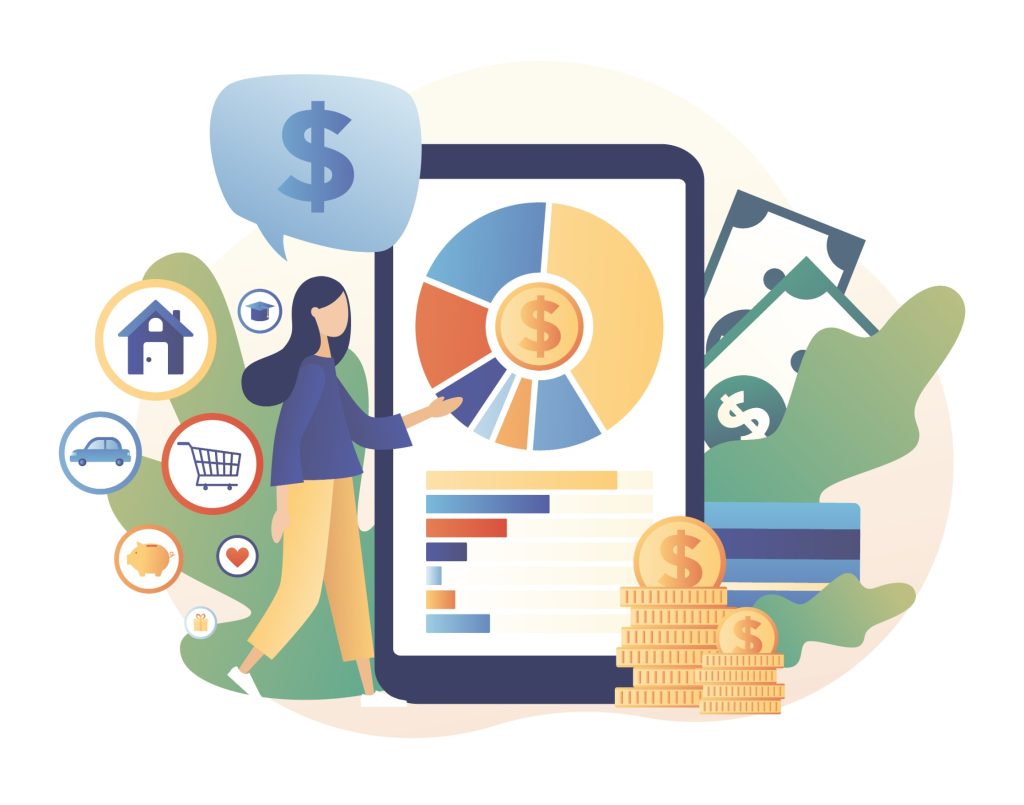By Amy Miller, AFC®

If you’ve been wondering where your money is going and are trying to start the New Year off with a better grip on your finances, a budgeting app might be something you’ve considered.
Expense tracker and budgeting apps are designed to help you take control of your finances by putting everything in one place. They help you track spending, manage your bills, and direct cash flow while providing an outline of your financial choices and habits.
There are many different types of budgeting apps out there – from basic expense trackers to some that offer additional functions including budgeting tools, goal-setting guidance, reminders, and investment advice. Knowing the features of each one will help you pick the right one for your goals. Below, we’ve put together a list of the top expense tracker and budgeting apps for 2023:
YNAB (You Need a Budget)
This app is great for all those who struggle with debt and need to take more control of their money. Users must plan their financial decisions ahead of time by allocating how much of their income will go to each set spending category and savings goal. By taking a hands-on approach and planning beforehand, users can learn to be more intentional with their money.
The app links to your checking and savings accounts, as well as loans and credit cards. Subscribers must be committed to using the app to make it worth the cost of $14.99 per month or $99 per year. The app’s developers do offer a free 34-day trial and one year free to all college students.
Apple Store Rating: 4.8 Google Play Rating: 4.6
Mint
This app syncs to several types of bank accounts, loans, and bills. You can customize your expense categories and set spending limits and alerts for each. Mint also provides “Mintsights:” tips and insights that encourage goal setting, debt reduction, and savings. The app will also provide the user’s credit score.
This app is free and will track just about everything for you. It is ideal for all who want to really understand where their money is going.
Apple Store Rating: 4.8 Google Play Rating: 4.3
Goodbudget
This app is also focused on planning rather than tracking previous transactions and is based on the popular “envelope” method that separates income into specific spending categories or “envelopes.”
This app does not connect to any of your accounts; all transactions and balances must be entered manually. Once entered, you can then put money in each “envelope”. This is perfect for anyone who does not want to link financial accounts to an app and isn’t afraid to put in the work.
There is a free version that includes one account and a limited number of “envelopes” and a paid version that includes unlimited accounts and categories for $8.00/month or $70 per year.
Apple Store Rating: 4.7 Google Play Store Rating: 4.3
EveryDollar
This app also offers both a free and paid version. The free version offers basic services, does not link to any of your accounts, and requires manual entry of incoming and outgoing funds. You must also set your own categories and reminders for bill payments. The paid premium version does connect to your checking, savings, and investment accounts gathers transaction information, and provides custom reports and suggestions based on your spending.
The premium version of EveryDollar can be used on a trial basis free for 14 days. Afterward, it’s $12.99 per month or $79.99 for a year.
Apple Store Rating: 4.8 Google Play Rating: 3.5
Honeydue
Managing money with a partner can be stressful. This free app is designed to help couples manage money better together by giving them the power to oversee and collaborate on financial transactions and bills. Couples can work together to set up spending limits, alerts, and reminders.
Both partners can sync their accounts and the app will automatically sort expenses in both preset and customizable categories.
Apple Store Rating: 4.5 Google Play Rating: 3.7
Choosing an App
Each of these apps is designed to help you make the most of your finances by putting everything in one place and giving you a clear picture of your financial choices and habits. Understanding how much is coming and going from your account can help you be better prepared, reduce stress, and improve your overall financial health.
When choosing an app, it is best to start by outlining your needs and goals, then consider the fees and features of each before choosing. The best tool for you is one that you will continue to use consistently.